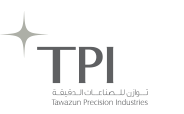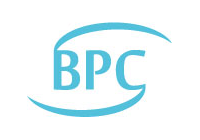Global Laser Sensors Industry Forecast to 2025 - Increasing Adoption of Industry 4.0 and Smart Manufacturing Practices
DUBLIN, Sept. 1, 2020 /PRNewswire/ -- The "Laser Sensor Market - Growth, Trends, Forecasts (2020-2025)" report has been added to ResearchAndMarkets.com's offering.
http://mma.prnewswire.com/media/539438/Research_and_Markets_Logo.jpg
The global laser sensors market was valued at USD 912.5 million in 2019, and it is expected to reach a value of USD 1,565.5 million by 2025, registering a CAGR of 9.61% during the forecast period (2020-2025).
The emerging semiconductor laser technologies are significantly revolutionizing the industrial automation process. IIoT is expected to become a game-changer for the modern factory providing a new trend to the market. The applications of an industrialized inspection need detection of the presence and absence of an object. This can be solved by using a laser sensor to address quality control tasks.
-- Laser distance sensors are designed for non-contact distance
measurements: laser gauges for measuring ranges up to 10 meters, laser
distance sensors for up to 3,000m. These sensors are generally utilized
for positioning and type classification in machine building and handling
equipment.
-- Moreover, in Feb 2020, VocalZoom (VZ), a manufacturer and provider of
vibration sensors for industry 4.0, announced the launch of its
autonomous laser sensors for the IIoT. It combines contactless,
high-resolution vibration sensor technology with built-in data
processing and wireless communications. It offers low-cost and fast
deployment of a wide range of positioning and monitoring applications
for IIoT environments.
-- Further, attaining stable and accurate measurements is essential to
ensure reliable product values and error-free production. The laser
sensor can be used on reflective surfaces, numerous materials, and
colors. These sensors are incorporated with rough, independent housing,
a linear imager, a pinpoint laser emitter.
-- According to Emerson, the projected growth of the global factory
automation market is expected to increase from 3% in 2019 to 3.5% by
2021, which significantly holds the market demand. Further, the use of
laser sensor technology innovation in the maritime and offshore industry
is expected to be a future trend. Primarily a laser-based navigational
aid, LADAR (Laser Detection and Ranging), combines long-distance object
detection with high -accuracy measurement, giving users a full 2D/ 3D/4D
(3D plus time) perspective for optimal maritime awareness.
-- Further, players are innovating new devices and technology innovation,
providing the integration of laser sensors, which are attributing to
market growth. For instance, in April 2020, Xiaomi unveiled the
company's new smart Internet of Things (IoT) home appliance Mi Vacuum
-Mop P series in India. The Mi Vacuum is incorporated into twelve
different multi-directional sensors and a dedicated Laser Distance
Sensor (LDS) navigation system such that it can be used to scan complex
environments accurately and avoid obstacles during the cleaning process.
-- The COVID-19 outbreak in China is disrupting the global tech sector,
especially hardware, electronic manufacturing services providers, and
semiconductor companies, as operations in the world's largest tech
manufacturing hub are threatened. Also, for the COVID-19 situation,
researchers have been developing a laser sensor that can pick up
diseases at the earliest point of infection from saliva or nasal swab in
minutes. They say the non-invasive optical biosensor demonstrator will
pick up COVID-19 in people as soon as it is present in the body. The
researchers already created six working laboratory demonstrators for
other applications and said that the technology still needs further
development and testing but could be available within 2020. This
significantly helps the market growth in this sector.
Key Market Trends
Automotive Expected to Witness Significant Growth
-- End-user industries such as automotive, are greatly benefiting from the
advances in laser use, mostly with future sales of the autonomous
vehicle. Autonomous cars use other sensors to see, notably radars and
cameras, but laser vision is hard to match. Radars are reliable but do
not offer the resolution needed to pick out things like arms and legs.
Cameras deliver the detail but it requires adopting
machine-learning-powered software such that it that can translate 2-D
images into 3-D understanding. Lidar on the other hand offers hard,
computer-friendly data in the form of exact measurements.
-- In June 2020, Mouser has enhanced the lidar vision SPL S 1 L90 A and SPL
S 4 L90 A lasers from Osram Opto Semiconductors. The high -power,
infrared SMT components feature a 905 nm laser wavelength suitable for
use in autonomous vehicles and other LiDAR applications. The lasers
provide a typical output of 120 W at 40 A per channel, at up to 33 %
efficiency. The lasers feature low thermal resistance, enabling heat to
dissipate quickly from components even when operating at high currents.
-- Further, currently, Livox Technology is bringing its Livox Tele-15
automotive lidar to the global market on a mass-producible scale. It is
designed for advanced long-distance detection, where the Livox Tele-15
offers a durable, high precision system in a compact form. Now, objects
with low reflectivity have an increased detection range of 60 % from 200
meters to 320 meters at 10 % reflectivity, and it will also detect
objects at 500 m with 50 % reflectivity, previously requiring 80 %
reflectivity at that distance.
-- Apart from this, governments across the globe are also encouraging the
deployment of ADAS features worldwide, which will drive the growth of
the market. For instance, the US Department of Transportation's National
Highway Traffic Safety Administration (NHTSA) published the Federal
Automated Vehicles Policy related to highly-automated vehicles (HAV),
which range from vehicles with advanced driver-assistance systems
features to autonomous vehicles.
-- Additionally, in June 2020, Infowork announced that it would start
developing the Frequency Modulated Continuous Wave (FMCW) technology, a
sensor for self -driving vehicles, in collaboration with Hyundai Motors.
The FMCW LiDAR under development is a sensor that measures the distance
of an object with a laser and models its surroundings with precise 3D
images.
North America Expected to Witness Significant Growth
-- The North American region is known to be the early adopters of new
technology in manufacturing, design, and research in the laser sensor.
The region's prominence drives the demand in exporting electronics
equipment and growing end-user industries that are significant consumers
of laser sensors such as defense, consumer electronics, etc.
-- In military and protection, the Pentagon developed an infrared laser
that can identify a person's unique cardiac signature up to 200 meters
away. The laser prototype which is known as Jetson is used in the
measurement of surface vibrations caused by the heartbeat at a distance.
Under suitable conditions, the technology can achieve an identification
95 percent of the time.
-- Moreover, the Department of Defense, at the request of United States
special operations forces, used the principle, primarily to develop an
infrared laser that can be used in the identification of enemy
combatants from a significant distance by reading their cardiac
signature. The laser is expected to penetrate clothing and achieve an
identification roughly 95% of the time from up to 200 meters away.
-- Further, in Oct 2019, the during the association of the United States
Army's annual meeting, the defense giant L3Harris Technologies announced
that the company got an order from the Army for 65 electro-optical
sensor suite units, to mount on the service's latest Shadow drones. The
drones are configured to fit on the Tactical Unmanned Air Systems Shadow
UAV (RQ-7Bv2), the contract is for 65 WESCAM MX-10D electro-optical,
infrared and laser designator sensor suites.
-- Moreover, in the consumer electronic segment, smartphones, tablets, and
AI-assisted electronics are experiencing high growth. This is expected
to influence the growth of the laser sensor market in the country.
According to the US Consumer Technology Sales and Forecast study, which
was conducted by the Consumer Technology Association (CTA), the revenue
generated by smartphones was valued at USD 79.1 billion and USD 77.5
billion in 2018 and 2019.
Competitive Landscape
The Laser Sensor market is highly competitive owing to the presence of multiple vendors. The market appears to be moderately concentrated. Multiple non-laser companies are entering the market to leverage the opportunities its presents or use the sensors for their applications. Additionally, many laser manufacturers are making acquisitions to expand their product portfolio.
Some of the recent developments in the industry are as follows:
-- April 2020 - SmartRay launched one more product in its ECCO sensor
family which is balanced for the diverse application requirements of
consumer electronics manufacturing. Utilizing SmartRay's blue laser
technology for image quality and repeatability, even for applications
with low field-of-view, ECCO 95.020 offers 3D scanning of up to 20
million points per second.
-- November 2019 - Micro-Epsilon has extended its optoNCDT 1750 portfolio
which comprises laser triangulation sensors with the introduction of a
new Blue Laser version for measuring fast-displacement, distance, and
position. The sensors have new high-performance lenses, laser control,
and evaluation algorithms to facilitate precise measurements on
different surfaces and materials.
Key Topics Covered
1 INTRODUCTION
1.1 Study Assumption and Market Definition
1.2 Scope of the Study
2 RESEARCH METHODOLOGY
3 EXECUTIVE SUMMARY
4 MARKET DYNAMICS
4.1 Market Overview
4.2 Market Drivers
4.2.1 Increasing Adoption of Industry 4.0 and Smart Manufacturing Practices
4.2.2 Reduction of Price Leading to Large Scale Application
4.3 Market Restraints
4.3.1 High Requirement of Power and Energy Density for Measuring Smaller Beams
4.4 Industry Value Chain Analysis
4.5 Industry Attractiveness - Porter's Five Force Analysis
4.6 Impact of COVID-19 on the Industry
5 MARKET SEGMENTATION
5.1 Component
5.1.1 Hardware and Software
5.1.2 Services
5.2 End-user Industry
5.2.1 Electronics Manufacturing
5.2.2 Aviation
5.2.3 Construction
5.2.4 Automotive
5.2.5 Other End-user Industries
5.3 Geography
5.3.1 North America
5.3.2 Europe
5.3.3 Asia-Pacific
5.3.4 Rest of the World
6 COMPETITIVE LANDSCAPE
6.1 Company Profiles
6.1.1 Keyence Corporation
6.1.2 Micro-Epsilon Messtechnik GmbH & Co. KG
6.1.3 IFM Electronic GmbH
6.1.4 Baumer Electric AG
6.1.5 SmartRay GmbH
6.1.6 MTI Instruments Inc.
6.1.7 Rockwell Automation Inc.
6.1.8 Dimetix AG
6.1.9 First Sensor AG
7 INVESTMENT ANALYSIS
8 MARKET OPPORTUNITIES AND FUTURE TRENDS
For more information about this report visit https://www.researchandmarkets.com/r/l8se6p
Research and Markets also offers Custom Research services providing focused, comprehensive and tailored research.
Media Contact:
Research and Markets
Laura Wood, Senior Manager
press@researchandmarkets.com
For E.S.T Office Hours Call +1-917-300-0470
For U.S./CAN Toll Free Call +1-800-526-8630
For GMT Office Hours Call +353-1-416-8900
U.S. Fax: 646-607-1907
Fax (outside U.S.): +353-1-481-1716
View original content:http://www.prnewswire.com/news-releases/global-laser-sensors-industry-forecast-to-2025---increasing-adoption-of-industry-4-0-and-smart-manufacturing-practices-301121888.html
SOURCE Research and Markets




